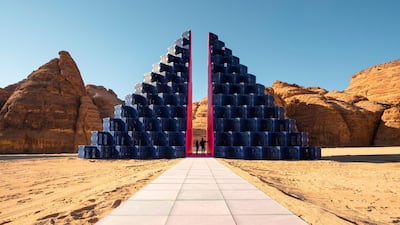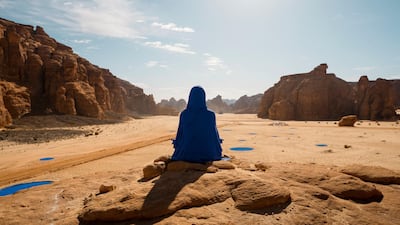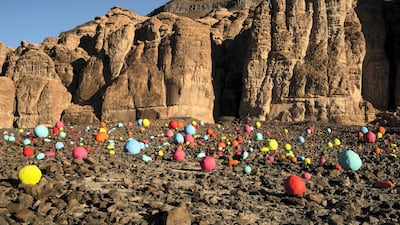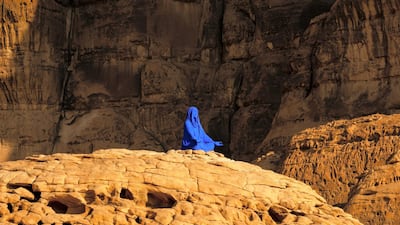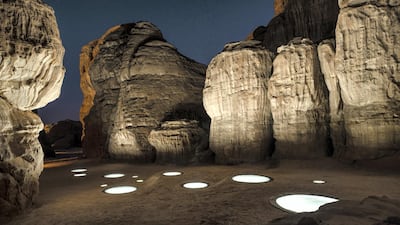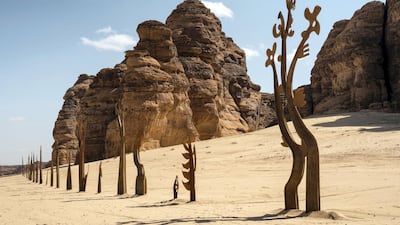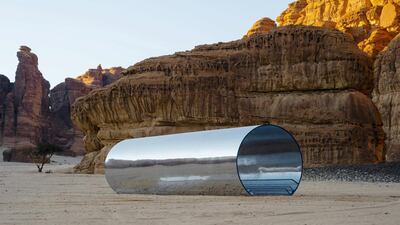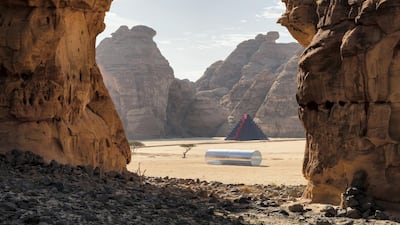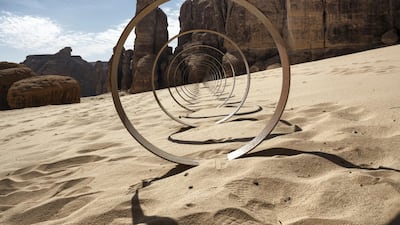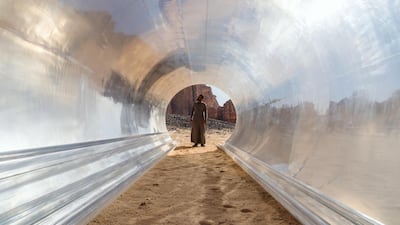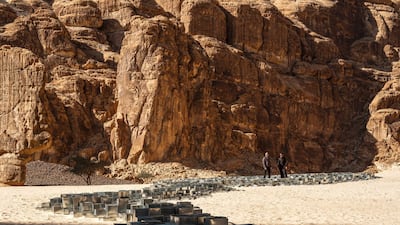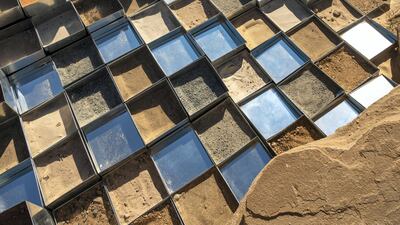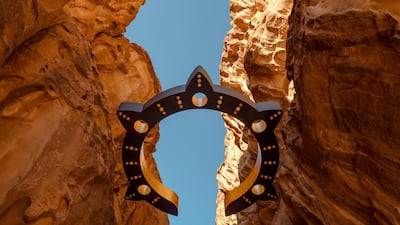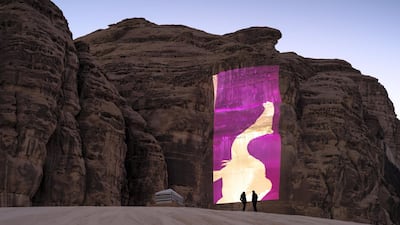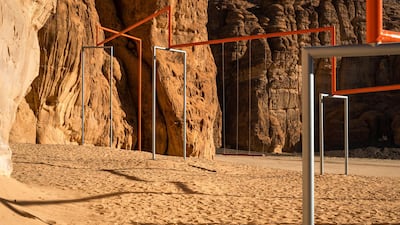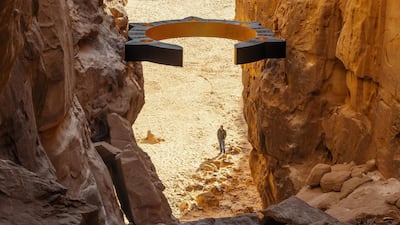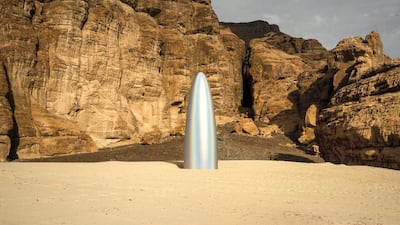Nestled within a valley on the incense trade routes of the 7th century BCE, just north of the Nabatean tombs of Al Hegra, are craters full of deep-blue dye, trampolines positioned in the sand, wide swings for three people, and a river made of metal date boxes that’s filled with earth and mirrors.
It’s an extreme meeting of the old and new: Desert X Al Ula has opened to the public, a six-week-specific installation of artworks made in the awesome setting of the Al Ula in north western Saudi Arabia.
Desert X began as a biennial in southern California, bringing visitors through the Coachella Valley in search installations, sculptures, and performances. Now, for the Royal Commission for Al Ula (RCU)’s first major contemporary art project for the heritage site, Desert X Al Ula commissions 14 Saudi and international artists to make artworks in the sand.
“Al Ula is the power of heritage crossing through multiple civilisations,” says Amr Al Madani, chief executive of the RCU. “This is a living museum interacting with nature.”
Curated by Neville Wakefield of Desert X and the Saudi curators Raneen Farsi and Aya Alireza, the results are joyful. The works react to the site with a desire to reach out to the kingdom’s new audiences.
In Now You See Me, Now You Don't, the Saudi artist Manal Al Dowayan burrowed trampolines up and down a valley, as if they were puddles. "I used to come to the desert with my family as a child," she says. "We were a family obsessed with geology. But in Al Ula I saw the puddles that we don't have in the Eastern Province, where there's not so much rain. They are magnificent lakes. Places to reflect and look and touch. I wanted to re-create these puddles, which will then disappear just like the natural puddles will."

Visitors are encouraged to bounce on the trampolines, creating the surreal sight of people bobbing up and down within a narrow offshoot of the valley.
Such direct forms of engagement was a key strategy elsewhere; the Emirati curator Noor Al Suwaidi, who was visiting, called the exhibition an "artists' playground". On a small outcrop overlooking the valley, the Danish collective Superflex installed One Two Three Swing! – swings made for three people. The awkwardness of the wide swing means our group has to coordinate together in order to take off at the same time; we all then go soaring, in an unexpected moment of collectively.
The geology of the surrounding area was, unsurprisingly, another principle subject. The Saudi artist Muhannad Shono made The Lost Path, a work of 65,000 black plastic tubes that snake from on high, with small rivulets coming together to form a thick cylinder that spills out into the sand.
“I want visitors to follow the work as if it were a treasure map,” he says. “Who knows where it will lead you?” The tubes used to carry oil, in a quiet reminder of the modern context of Saudi and the resources that fuel such an expansive project as this.
With Glimpses of the Past, Zahra Alghamdi made another river in an adjoining crevasse, made of the metal boxes used to store dates in the Al Ula region, which she filled with mirrors and sand from all the different regions of Saudi, in reference to the site's history as a trade route.
The Emirati artist Mohammed Ahmed Ibrahim set out small brightly coloured spheres among a spree of rock in Falling Stones Garden. He looked for the colours that are hiding in the rock and sand and brought them out by exaggerating them. "Not to disturb the nature," he told me. "Just to lie softly on it."
Wakefield is a fan of the work: “One of the things that the art is doing is asking us to slow down,” says Wakefield. “Ibrahim is asking us to see these colours.” As the director of Desert X since 2017, Wakefield also founded the Elevation 1049 project in Switzerland, which also commissioned site-specific for the mountainous terrain.
“I’ve always been interested in art that goes beyond gallery walls. It’s about unbinding art from the institution.”
Desert X Al Ula is open in Al Ula, Saudi until Saturday, March 7, 2020. More information is available on www.desertx.org/alula
